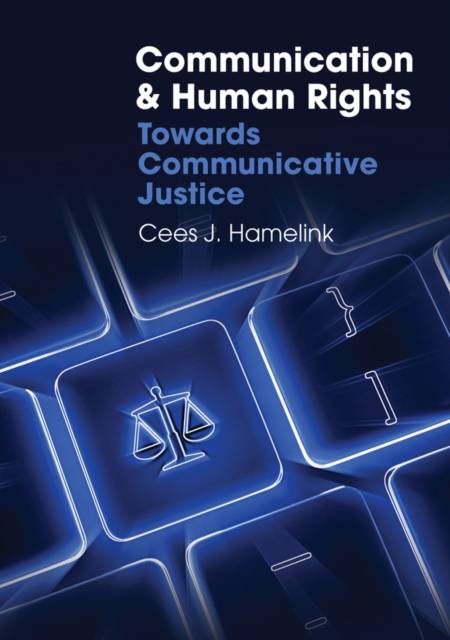
Je cadeautjes zeker op tijd in huis hebben voor de feestdagen? Kom langs in onze winkels en vind het perfecte geschenk!
- Afhalen na 1 uur in een winkel met voorraad
- Gratis thuislevering in België vanaf € 30
- Ruim aanbod met 7 miljoen producten
Je cadeautjes zeker op tijd in huis hebben voor de feestdagen? Kom langs in onze winkels en vind het perfecte geschenk!
- Afhalen na 1 uur in een winkel met voorraad
- Gratis thuislevering in België vanaf € 30
- Ruim aanbod met 7 miljoen producten
Zoeken
€ 30,95
+ 61 punten
Uitvoering
Omschrijving
Human rights and communication are deeply connected: human rights need communication to expose violations and to offer platforms for dialogue, while communication needs human rights to provide standards for free speech and confidentiality. Together, they confront the reality of today's social and international order in which justice and understanding often seem unattainable.
In this book, Cees J. Hamelink guides the reader through the historical evolution of communication and human rights. In this original framework, he discusses topics such as the right to communicate and freedom of expression, as well as major challenges posed by the environmental crisis and digital technologies. With authority, he passionately argues that 'communicative justice' is the ultimate goal of applying the international human rights regime to different forms of communication. This goal can only be achieved if we manage to move from the prevailing 'thin' liberal conception of human rights to a 'thick' cosmopolitan conception of them.
Written by one of the world's leading scholars in this area, this wide-ranging book will be of interest to students of media and communication, human rights scholars, as well as practitioners, activists and anyone interested in applying the notion of justice to the basis of human existence: communication.
In this book, Cees J. Hamelink guides the reader through the historical evolution of communication and human rights. In this original framework, he discusses topics such as the right to communicate and freedom of expression, as well as major challenges posed by the environmental crisis and digital technologies. With authority, he passionately argues that 'communicative justice' is the ultimate goal of applying the international human rights regime to different forms of communication. This goal can only be achieved if we manage to move from the prevailing 'thin' liberal conception of human rights to a 'thick' cosmopolitan conception of them.
Written by one of the world's leading scholars in this area, this wide-ranging book will be of interest to students of media and communication, human rights scholars, as well as practitioners, activists and anyone interested in applying the notion of justice to the basis of human existence: communication.
Specificaties
Betrokkenen
- Auteur(s):
- Uitgeverij:
Inhoud
- Aantal bladzijden:
- 208
- Taal:
- Engels
Eigenschappen
- Productcode (EAN):
- 9780745649849
- Verschijningsdatum:
- 13/09/2023
- Uitvoering:
- Paperback
- Formaat:
- Trade paperback (VS)
- Afmetingen:
- 150 mm x 226 mm
- Gewicht:
- 340 g

Alleen bij Standaard Boekhandel
+ 61 punten op je klantenkaart van Standaard Boekhandel
Beoordelingen
We publiceren alleen reviews die voldoen aan de voorwaarden voor reviews. Bekijk onze voorwaarden voor reviews.









